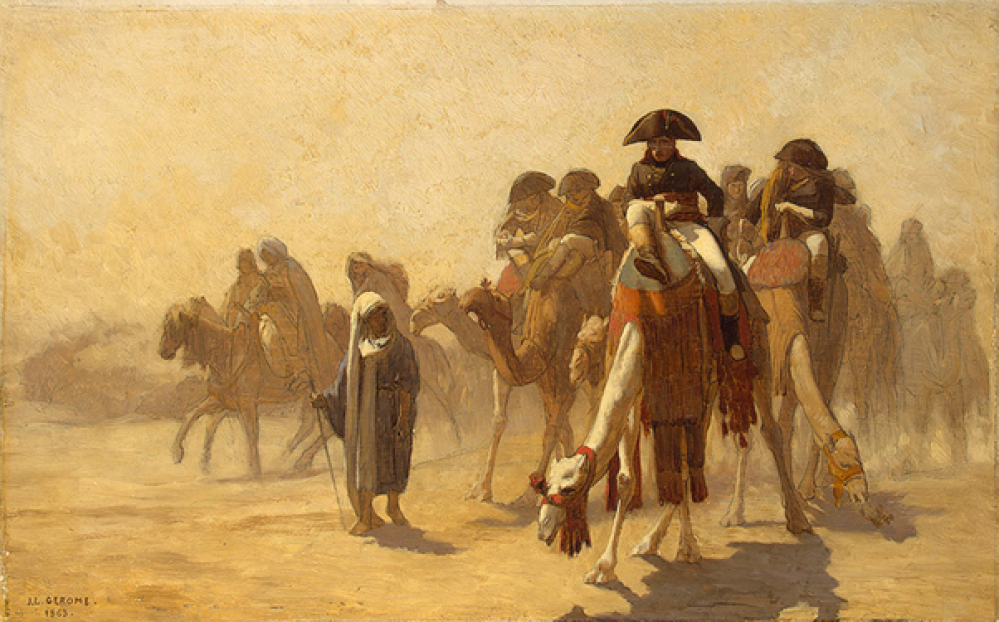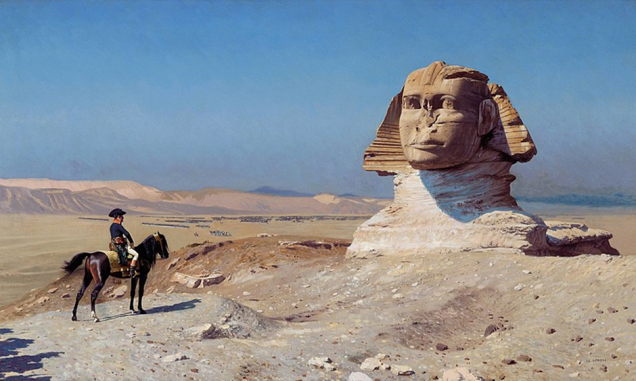
Napoleon in Egypt - Expédition Baïonnette en Argent
A Historical Digression and a Discussion on Uniforms
Another wall of text post whilst I start getting paint on figures.
Strictly speaking, Napoleon’s misadventures in Egypt aren’t part of the ‘Napoleonic Wars’. The French campaign in Egypt ran from 1798-1801, with Bonaparte leading the expedition as a General of Revolutionary France under the Directory. But we’re going to ignore that distinction for the duration of this project.
I’m going to include a short summary of the campaign for anyone unfamiliar with it, starting with why the French were in Egypt in the first place. There were a few different factors at play. Politically, there was the desire of the Directory to put some distance between Paris and a dangerously powerful military man, who was flushed with his spectacular success in Italy. There was also interest from both the Directory and Napoleon to attempt to remove Britain’s powerbase on the Indian sub-continent, whilst avenging losses from the Seven Years War, notably Canada and the colonies in the Indies.
The French Army of the Orient assembled at several Mediterranean ports, with Napoleon departing from Toulon in May 1798 at the head of ~36,000 men. They managed to dodge the Royal Navy, who were aware of the preparation for an invasion and were looking to intercept any French fleet, but scattered by a gale that allowed the French to depart Toulon unmolested. The French captured Malta on their way to landing at Aboukir Bay in Egypt, before marching on Alexandria. From Alexandria, the French marched to Cairo, defeating the Mamluks at the Battle of the Pyramids in July 1798.
At this point the Royal Navy finally caught up with French fleet, Admiral Nelson finding them anchored in a strong defensive position in Aboukir Bay. Nelson demonstrated his characteristic boldness, ordering his fleet to attack, slipping half of his ships in between the land and the French line, thus attacking from both sides. The Battle of the Nile was perhaps the worst French defeat of the whole Napoleonic period. The British suffered paltry casualties (no ships lost; ca.200 dead & 700 wounded), whilst the French lost eleven warships and two frigates, with only two warships and two frigates escaping. Unlike at Trafalgar, the results of battle were felt immediately. Without a fleet in the Mediterranean, France could no longer run the Egyptian campaign satisfactorily. Malta subsequently returned to British control. The Turks declared war on France on 4th September, and as a result of the lack of naval support Napoleon was to meet with failure at the siege of Acre, and his army struggled with supply issues for the remainder of the campaign.
The French set about consolidating their foothold in Egypt, quelling an uprising in Aciro, and Desaix pursing the Mamluk’s into the upper Nile area. In 1799, Napoleon attempted to counter an Ottoman attack into Egypt by invading Syria. The Syrian campaign concluded with the failed siege of Acre, an interesting siege in that the French held none of the typically advantages of a besieger, yet still persisted with the attempt – they were outnumbered by the defenders, lacked siege artillery, and had poor supply lines (whilst Ace was re-supplied by sea by the Royal Navy). The French retreated back to Cairo, with 1,800 wounded, having lost 600 men to the plague and 1,200 to enemy action.
In July 1799 a Turkish fleet landed an army in Aboukir, with the French engaging them in a land battle. This was Napoleon’s last action in Egypt. His army was diminishing from losses in battle and disease, difficulties in resupply were paramount, and there was news of political instability at home. He abandoned the Army of the Orient in August 1799, accompanied by some of his favoured generals (Berthier, Murat, Lannes and Marmont), leaving General Kleber to command those left behind. From 1800-1801 the British combined with the Ottomans in a land offensive that defeated the French, who finally capitulated in 1801.
Onto uniforms then, specifically French uniforms. The Egypt campaign has essentially three different phases of uniforms for the French.
- The uniform at the initial embarkation of the expedition.
- Changes to the uniform in Egypt to adjust to local materials and supplies.
- The Kelber Ordnance.
The first phase is essentially the uniform of the French Revolutionary armies – long tailed blue coats, bicorns, tricolour trousers and patriotic zeal aplenty.
In 1799 the troops were issued with distinctive leather helmets called petit casquettes, and indigo dyed cotton uniforms were issued alongside loose white trousers to replace their breeches.
Which brings us to the Kleber Ordnance 1799, or where the uniforms really diverge from the usual colours that you’d expect to see on a French soldier. After Napoleon abandoned his army, Kleber was left in charge of the expedition, cut off from supply lines back to friendly territory by the British Navy. Kleber had to make do with whatever material he could find locally to cloth and uniform the French soldiers. This resulted in a variety of very colourful coats for the French infantry, some wearing scarlet coats, others crimson, sky blue, light green, brown and violet – essentially, a very different looking army to the blue coated French that are typical of the period. There’s great scope within a small skirmish game like Silver Bayonet to have an excuse to capture a lot of this variety, so I will be exploring some of the different infantry uniforms of the Kleber Ordnance within this project.
The British army contained contingents from India and troops from South Africa, not to mention marine regiments on land and various German companies, so there is lots of opportunity to build a very diverse and interesting collection focused on this campaign. The Ottomans and Mamluks also have very interesting armies for this area, with very bright and elaborate uniforms. But at the start of this project, I’ll be concentrating on the French.












































































Great write up. I will be following.
Thanks NR. It will be a little while before there’s much to show, but I intend to get a start on painting for this project in the next couple of weeks.